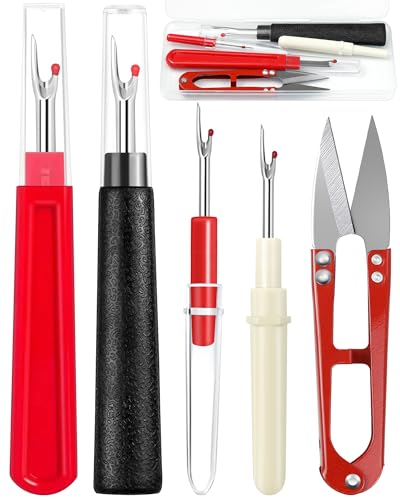Sewing can be such a rewarding hobby, especially when you achieve those perfect, clean edges. One technique that really elevates your projects is sewing a faced hem. It might sound fancy, but once you get the hang of it, you’ll wonder why you didn’t try it sooner.
I’ve found that faced hems add a professional touch to everything from garments to home decor. They not only look neat but also provide extra durability, making your creations stand out. Let’s dive into the steps together and transform your sewing projects with this simple yet effective method.
Understanding Faced Hems
A faced hem creates clean, professional edges on your sewing projects. It’s a staple technique that enhances both appearance and durability.
What Is a Faced Hem?
A faced hem involves attaching a separate fabric strip, known as the facing, to the raw edge of your garment or project. This method conceals the raw edge, preventing fraying and providing a polished finish. I use faced hems in various projects, such as skirts, dresses, and home decor items, to achieve neat and sturdy edges.
Benefits of Faced Hems
- Clean Appearance: Faced hems offer a seamless and tidy look, elevating the overall quality of your project.
- Enhanced Durability: By encasing raw edges, faced hems reduce wear and tear, extending the life of your creations.
- Versatility: This technique works well with different fabrics and styles, making it adaptable to various sewing projects.
- Professional Finish: Faced hems give your work a professional touch, suitable for both personal and commercial sewing endeavors.
Tools and Materials Needed
- Sewing machine: I use it to create secure and even seams.
- Matching thread: I select a color that blends seamlessly with the fabric.
- Scissors: I rely on sharp scissors for precise fabric cutting.
- Pins or clips: I use them to hold fabric layers in place before sewing.
- Measuring tape: I ensure accurate measurements for the hem.
- Iron and ironing board: I press the seams for a smooth finish.
- Fabric facing: I attach it to conceal the raw edges.
Preparing Your Fabric
Before sewing a faced hem, proper fabric preparation ensures clean and professional results.
Measuring and Marking
I start by measuring the hem area to determine the facing width needed. Using a measuring tape, I mark the fabric precisely where the hem will be folded. Clear markings allow for accurate alignment when attaching the facing. Typically, I add an extra inch to accommodate the fold and seam allowance, ensuring the faced hem sits neatly.
Pressing the Hem
Pressing the hem is crucial for a smooth finish. I use an iron set to the appropriate temperature for my fabric. First, I fold the hem up to the marked line and press it firmly to create a crisp crease. Then, I fold the fabric again to encase the raw edge, pressing once more to set the fold. This preparation makes sewing the faced hem easier and guarantees a sharp, clean edge.
Step-by-Step Sewing Instructions
1. Prepare Your Fabric and Facing
Align the fabric and facing pieces by matching the right sides together. Ensure both pieces are ironed flat for accurate stitching.
2. Pin the Facing in Place
Secure the facing to the raw edge of the fabric using pins or clips. Start from one end and work evenly to prevent shifting.
3. Sew the Seam
Using a straight stitch, sew along the pinned edge. Maintain consistent stitch length to ensure a uniform finish.
4. Trim the Seam Allowance
Carefully trim the seam allowance to about 1/4 inch. This reduces bulk and helps the hem lie flat.
5. Press the Seam
Iron the seam allowance to one side of the fabric. Pressing helps set the stitches and smooths the fabric.
6. Fold and Press the Hem
Fold the hem up to the desired length, encasing the raw edge within the fold. Press firmly to create a crisp edge.
7. Secure the Hem with Stitches
Sew the hem in place using a straight or invisible stitch. Ensure the stitches are evenly spaced for a neat appearance.

8. Final Press
Give the hem a final press to set all folds and stitches. This step ensures the faced hem maintains its clean, professional look.
Tools and Tips
| Tool | Purpose |
|---|---|
| Sewing machine | Efficient stitching of seams and hems |
| Iron | Pressing fabric for accurate folding |
| Pins or clips | Securing fabric pieces before sewing |
| Measuring tape | Measuring hem length and seam allowances |
| Scissors | Cutting fabric and seam allowances precisely |
- Measure accurately: Double-check all measurements before cutting.
- Use quality thread: Strong thread prevents seams from breaking.
- Maintain tension: Proper machine tension ensures even stitches.
- Press frequently: Regular pressing keeps fabric smooth and seams sharp.
By following these steps, you achieve a faced hem with clean, professional edges that enhance the overall appearance of your sewing projects.
Tips for Achieving Clean Edges
Achieving clean edges when sewing a faced hem enhances the professional look of your projects. Here are my top tips to ensure precision and perfection:
- Use Sharp Scissors
- Dull scissors can fray fabric edges and cause uneven cuts. I always invest in a good pair of fabric scissors and sharpen them regularly for clean, straight lines.
- Measure Twice, Cut Once
- Accurate measurements prevent mistakes. I double-check all measurements before cutting to ensure the facing aligns perfectly with the hem.
- Press Thoroughly
- Pressing is crucial for crisp edges. I use a hot iron to press the hem flat, ensuring the fabric lies smoothly and the facing adheres correctly.
- Trim Seam Allowances
- After sewing, trimming excess seam allowance reduces bulk. I trim the seams to about ¼ inch before pressing them open, resulting in a sleek finish.
- Stabilize Fabric if Needed
- Delicate fabrics can shift or stretch. I apply stabilizer tape or use tissue paper between layers to keep the fabric steady while sewing.
- Use the Right Needle and Thread
- Matching the needle and thread to your fabric type prevents puckering and skipped stitches. I select a sharp needle and high-quality thread suitable for the material I’m working with.
- Pin or Clip Securely
- Properly securing the facing prevents shifting during sewing. I use plenty of pins or fabric clips, placing them perpendicular to the seam line for stability.
- Sew Slowly and Steadily
- Taking my time ensures even stitching and accurate alignment. I sew at a consistent pace, maintaining control over the fabric to avoid crooked lines.
- Finish Seams Neatly
- I finish the seams with a zigzag stitch or a serger to prevent fraying. This step adds durability and maintains the clean edges of the faced hem.
- Test on Scrap Fabric
- Before sewing the actual project, I practice on scrap pieces. This allows me to adjust tension and stitch length settings, ensuring optimal results on the final garment.
Implementing these tips helps me achieve flawless faced hems with clean, professional edges every time.
Common Mistakes to Avoid
- Incorrect Measuring: Failing to add the necessary seam allowance leads to uneven hems and compromises the finished edge.
- Poor Alignment: Misaligning the facing with the raw edge causes crooked hems, detracting from the professional look.
- Skipping Pressing Steps: Neglecting to press the hem prevents a crisp, polished finish and can make the hem appear wrinkled.
- Using Dull Scissors: Cutting with dull blades frays fabric edges, making it difficult to achieve clean, sharp lines.
- Wrong Thread Selection: Selecting mismatched or low-quality thread weakens the seam and affects the hem’s durability.
- Incorrect Needle Type: Using the wrong needle can damage the fabric, causing puckering or skipped stitches.
- Inconsistent Stitch Length: Varying stitch lengths create an uneven hem, which looks unprofessional and can unravel over time.
- Overloading the Sewing Machine: Using too much thread can create bulky seams and uneven stitching, compromising the hem’s appearance.
- Ignoring Fabric Grain: Sewing against the fabric grain results in a hem that doesn’t lie flat, affecting the garment’s overall fit and look.
- Rushing the Process: Moving too quickly through steps increases the likelihood of errors, leading to a less precise and clean hem.
Conclusion
Mastering the faced hem technique truly takes your sewing projects to the next level. Seeing those clean edges and professional finishes makes all the effort worth it.
« You Won’t Believe How Easy It Is to Sew a Lapped Zipper for Pants
Master Installing a Zipper with a Sewing Machine: 7 Tips Every Sewist Needs »
I love how a simple faced hem can transform a garment or home decor item, giving it that polished look you’re aiming for. It’s a satisfying process that really showcases your skills.
Don’t be afraid to practice and experiment with different fabrics and styles. Every project you complete adds to your confidence and expertise. Happy sewing and enjoy the journey of creating beautiful durable pieces with clean edges!

















